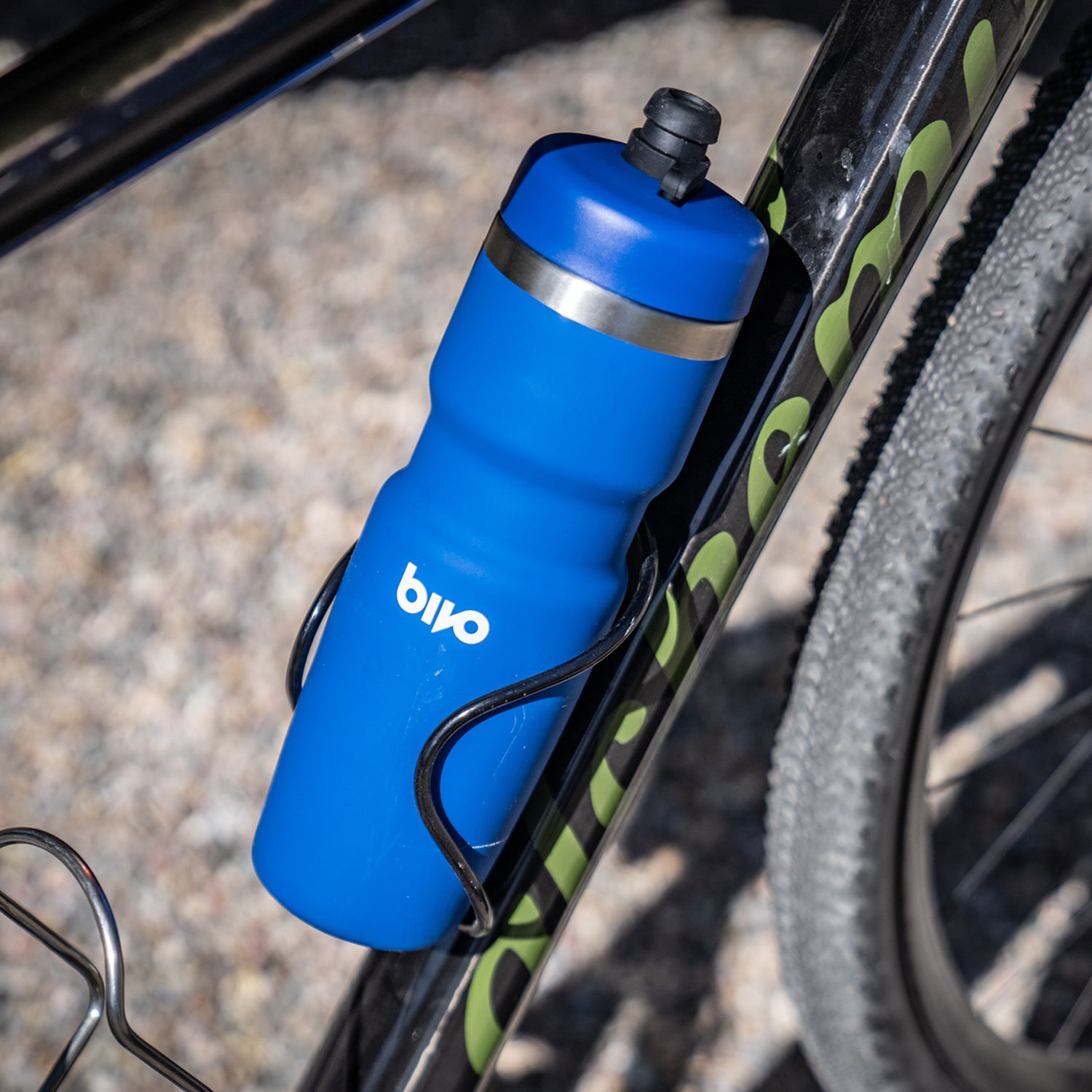Whenever I ride my road or gravel bikes during the summer in New Mexico I follow a specific water bottle routine in an attempt to keep my fluids cool. First, I take two insulated plastic water bottles鈥攖he kind with a foam insulation layer in between two layers of plastic鈥攁nd stuff them 90 perfect full of ice. Then I top them off with water and sometimes add a sports mix.
If I鈥檓 on my A game and leave the house by 8 a.m. the temps are usually in the 70s or 80s and the drinks remain nicely chilled. But, even if I get out the door early, after an hour of riding the thermometer has climbed to the mid 90s, and I鈥檓 sweating like a pig. This is when I鈥檓 most in need of a refresh, so I reach down expecting a nice jolt of cold water, only to find water that鈥檚 cool at best, and warm at worst. Even with the insulation, all the ice has melted and I find myself disappointed every time (you鈥檇 think I鈥檇 learn, but hope springs eternal).
The fact is, the flimsy layer of insulation in the water bottle鈥檚 walls doesn鈥檛 offer much protection for the ice. It slows warming a little bit, but not enough to fight off 90-degree temps, blazing sun, and the blast of hot air from moving at 10 to 20 miles per hour.
So I was excited to get my hands on the . Instead of foam, Bivo uses double-wall vacuum insulation to fight off the heat, like the everyday water bottles from companies like Yeti and Hydro Flask. I quickly set out to test if the vacuum insulation would be significantly better and whether a metal water bottle would be as easy to use as a plastic one.
To start, I took an insulated plastic water bottle and the Bivo鈥攂oth with 21-ounce capacity鈥攆illed them with the same amount of ice, topped them off with water, and put them in direct sun on my back deck on an 80-degree day. When I came back four hours later, the test results weren鈥檛 even close. The plastic bottle had zero ice left and the water was verging on warm. In the Bivo, however, there was plenty of ice left and the water was, obviously, ice cold.
Next, I took both bottles on an hour-long bike ride in 85-degree temps and got the same results. By the end of the ride the water in the plastic bottle was getting warm, while the Bivo bottle was still chock-full of ice. I have no doubt that if I spent three hours on my bike in 90-degree temps the Bivo water would still be refreshingly cold (they promise 12 hours).
I found the Bivo to be just as easy, if not easier, to drink from as the plastic bottle. When popped open, the Bivo鈥檚 high-flow, high-tech nozzle allows the water to gush out faster than squeezing a plastic bottle. I also found the taste of the water to be cleaner in the Bivo as the metal doesn鈥檛 contaminate the taste as much as plastic.
The Bivo would appear to be a no-brainer and I should instantly replace all my plastic bottles. But I鈥檓 not ready to let my plastic bottle go just yet, because they are better in a couple other ways.
Most importantly, it鈥檚 still significantly easier to get the plastic bottles in and out of my bike bottle cages. Bivo says they spent lots of time designing their bottle to fit all cages, but because of the rigidity of the metal, it takes more effort to get the Bivo in and out than it does for the more conforming plastic ones. It鈥檚 no fun to wrestle a bike bottle out of its cage when you鈥檙e tearing down pavement or gravel and need to pay attention to what鈥檚 ahead of you.
The $49 Bivo bottle also costs more than twice as much as an insulated plastic bottle. The CamelBak Podium Chill, for example, is only $20. If I somehow lose a Podium bottle because I forget it at a rest stop or it bounces out of my bike cage it鈥檚 not the end of the world. But if I were to lose a Bivo that nearly $50 price tag would sting.
Finally, the Bivo is heavier. The brand鈥檚 marketing says their bottles use 25 percent less material than a traditional vacuum-insulated metal water bottle to save weight. But for true roadies, that鈥檚 not enough because the Bivo tips the scale at 276 grams, or 9.7 ounces, while a Podium weighs around 110 grams, or 3.9 ounces. When you鈥檙e riding a feathery carbon frame set on carbon wheels and splurging for lightweight shoes and high-end lightweight components, you鈥檒l feel those extra ounces.
So what to do? In my case, it seems like a mix and match strategy is the solution. On the hottest days this summer I plan to bring one Bivo bottle and one plastic bottle. I鈥檒l start by drinking from the plastic bottle while its ice is intact and then switch to the Bivo bottle for the second half of the ride so that I have cold water throughout. If I鈥檓 on a shorter ride, the Bivo might stay at home. If I鈥檓 commuting, I鈥檒l bring just the Bivo because it can double as my office water bottle.
Even though the Bivo isn鈥檛 perfect, I鈥檓 glad to have the option. And I鈥檒l be thrilled the next time I reach down, an hour into a hot summer ride, and, instead of the usual disappointment, find refreshing ice-cold fluids.


